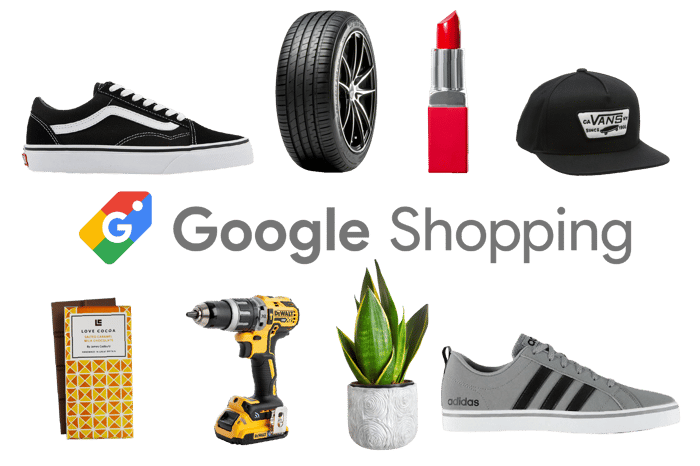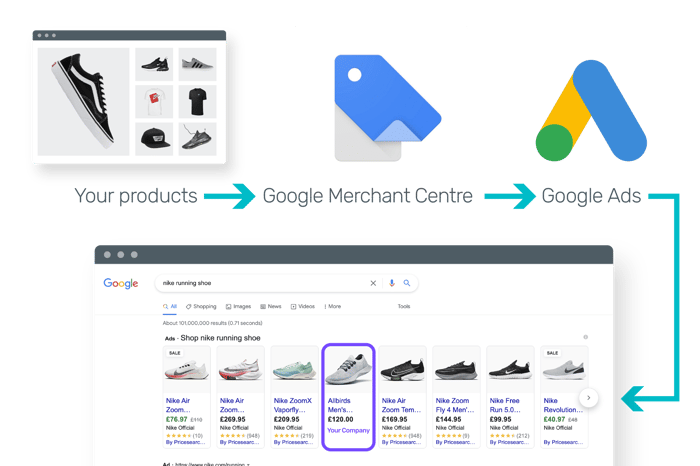Updated on October 3, 2024 | 2 minute read | Rebecca Cooper

So, how does Google Shopping work? Often, when you’re looking for a product online, your first port of call is Google search. When you search for a specific product little boxes will appear at the top of the search bar with images, prices and vendors. It almost looks like an online shop, similar to Amazon or eBay, but unlike these platforms, Google Shopping itself is not an online shop. Google Shopping is just an advertising opportunity provided by the biggest search engine in the world. So obviously, shop owners take advantage of this, in the hopes of driving more customers to their website through Google Shopping ads.
Google Shopping is a notoriously complicated and time-consuming channel to use. You can’t “set and forget” like you can with many other marketing channels. It’s a much more involved process that requires continuous optimisation.

That process is powered by two platforms: Google Ads and Google Merchant Centre. First, we start with the Merchant Centre, this is where your product feed lives in a “Google-friendly” format, learn more about Feeds here. The Merchant Centre then links to Ads, where all the real action happens. Ads is basically a project management tool. This is where your shopping campaigns are situated and where you will manage your campaigns to get the best results.
Google Shopping works quite differently from other platforms, such as Text Ads and Social. This is because, unlike Text Ads, you can’t choose the keywords to focus your campaign on. Instead, Google decides when your product listings should show up. They take a whole host of things into consideration to do this, including the information you provide in your feed, your site, and the bids you have set. The only way to filter this down is to use negative keywords, which are keywords that you do not want to show up for.
What’s the best way to manage Google Shopping for my business?
Read our guide to Google Shopping management
You’re never charged for your product showing up in a search. You only pay when a customer clicks the link on your ad, which will take them directly to the product page on your online shop. Hence, being in the category of “Pay Per Click”.
Find out more about PPC campaigns here
The cost will be based primarily on the competition. This can vary on a number of factors, including the retail vertical, margins, cost of sale and more. Consumer purchasing decisions will not just be based on the price and listing on Google, but also on the experience they have on the website. If the customer has a bad first impression when they first see the website, they will not follow through with the purchase so it is important that you consider the quality of your site when using this channel.
There are 3 main areas that impact your success on Google Shopping:
Make sure that your product data, images, price and any other details are up to scratch.
Setting the right bid price is essential and will impact your profitability on the channel. Learn how Bidnamic's technology offers a different approach to Google Shopping management.
The data you gain from Google Shopping is powerful and can be used to improve your performance on the channel and other areas of your business.
In summary, Google Shopping is an essential channel for ecommerce retailers. It gives you an opportunity to appear in front of potential customers on the most popular search engine in the world. However, to be successful requires a lot of attention and optimisation – but once you’ve cracked the code you will see excellent results.
Check out our article on which businesses would work best on Google Shopping.
Book a demo with one of our Google Shopping Specialists to discuss whether Google Shopping would work for your business and how to potentially increase your success on the channel.

